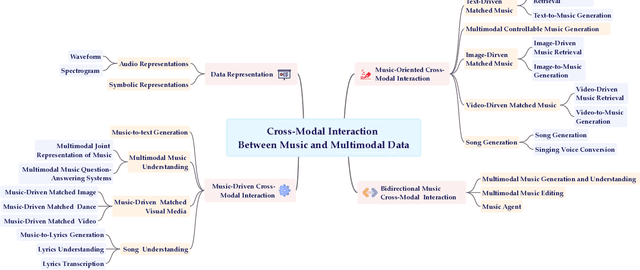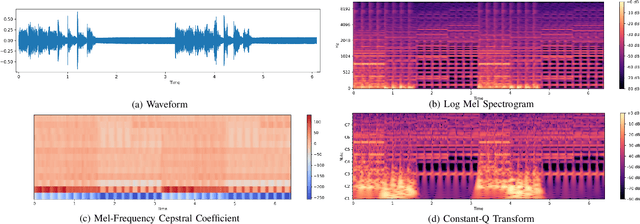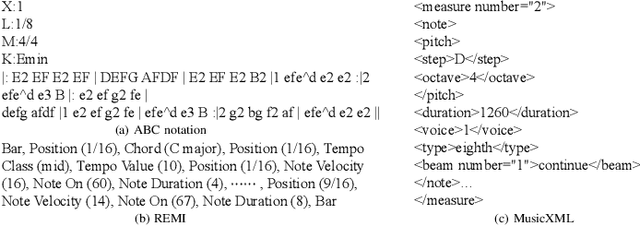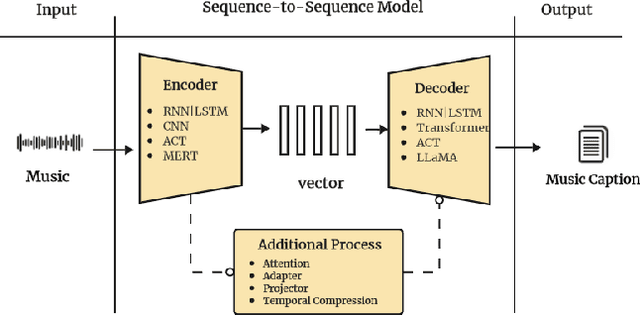Weiming Dong
Look Before You Leap: A GUI-Critic-R1 Model for Pre-Operative Error Diagnosis in GUI Automation
Jun 05, 2025Abstract:In recent years, Multimodal Large Language Models (MLLMs) have been extensively utilized for multimodal reasoning tasks, including Graphical User Interface (GUI) automation. Unlike general offline multimodal tasks, GUI automation is executed in online interactive environments, necessitating step-by-step decision-making based on real-time status of the environment. This task has a lower tolerance for decision-making errors at each step, as any mistakes may cumulatively disrupt the process and potentially lead to irreversible outcomes like deletions or payments. To address these issues, we introduce a pre-operative critic mechanism that provides effective feedback prior to the actual execution, by reasoning about the potential outcome and correctness of actions. Specifically, we propose a Suggestion-aware Gradient Relative Policy Optimization (S-GRPO) strategy to construct our pre-operative critic model GUI-Critic-R1, incorporating a novel suggestion reward to enhance the reliability of the model's feedback. Furthermore, we develop a reasoning-bootstrapping based data collection pipeline to create a GUI-Critic-Train and a GUI-Critic-Test, filling existing gaps in GUI critic data. Static experiments on the GUI-Critic-Test across both mobile and web domains reveal that our GUI-Critic-R1 offers significant advantages in critic accuracy compared to current MLLMs. Dynamic evaluation on GUI automation benchmark further highlights the effectiveness and superiority of our model, as evidenced by improved success rates and operational efficiency.
Multi-turn Consistent Image Editing
May 07, 2025Abstract:Many real-world applications, such as interactive photo retouching, artistic content creation, and product design, require flexible and iterative image editing. However, existing image editing methods primarily focus on achieving the desired modifications in a single step, which often struggles with ambiguous user intent, complex transformations, or the need for progressive refinements. As a result, these methods frequently produce inconsistent outcomes or fail to meet user expectations. To address these challenges, we propose a multi-turn image editing framework that enables users to iteratively refine their edits, progressively achieving more satisfactory results. Our approach leverages flow matching for accurate image inversion and a dual-objective Linear Quadratic Regulators (LQR) for stable sampling, effectively mitigating error accumulation. Additionally, by analyzing the layer-wise roles of transformers, we introduce a adaptive attention highlighting method that enhances editability while preserving multi-turn coherence. Extensive experiments demonstrate that our framework significantly improves edit success rates and visual fidelity compared to existing methods.
A Survey on Cross-Modal Interaction Between Music and Multimodal Data
Apr 17, 2025



Abstract:Multimodal learning has driven innovation across various industries, particularly in the field of music. By enabling more intuitive interaction experiences and enhancing immersion, it not only lowers the entry barriers to the music but also increases its overall appeal. This survey aims to provide a comprehensive review of multimodal tasks related to music, outlining how music contributes to multimodal learning and offering insights for researchers seeking to expand the boundaries of computational music. Unlike text and images, which are often semantically or visually intuitive, music primarily interacts with humans through auditory perception, making its data representation inherently less intuitive. Therefore, this paper first introduces the representations of music and provides an overview of music datasets. Subsequently, we categorize cross-modal interactions between music and multimodal data into three types: music-driven cross-modal interactions, music-oriented cross-modal interactions, and bidirectional music cross-modal interactions. For each category, we systematically trace the development of relevant sub-tasks, analyze existing limitations, and discuss emerging trends. Furthermore, we provide a comprehensive summary of datasets and evaluation metrics used in multimodal tasks related to music, offering benchmark references for future research. Finally, we discuss the current challenges in cross-modal interactions involving music and propose potential directions for future research.
Z-Magic: Zero-shot Multiple Attributes Guided Image Creator
Mar 15, 2025Abstract:The customization of multiple attributes has gained popularity with the rising demand for personalized content creation. Despite promising empirical results, the contextual coherence between different attributes has been largely overlooked. In this paper, we argue that subsequent attributes should follow the multivariable conditional distribution introduced by former attribute creation. In light of this, we reformulate multi-attribute creation from a conditional probability theory perspective and tackle the challenging zero-shot setting. By explicitly modeling the dependencies between attributes, we further enhance the coherence of generated images across diverse attribute combinations. Furthermore, we identify connections between multi-attribute customization and multi-task learning, effectively addressing the high computing cost encountered in multi-attribute synthesis. Extensive experiments demonstrate that Z-Magic outperforms existing models in zero-shot image generation, with broad implications for AI-driven design and creative applications.
Bringing Characters to New Stories: Training-Free Theme-Specific Image Generation via Dynamic Visual Prompting
Jan 26, 2025



Abstract:The stories and characters that captivate us as we grow up shape unique fantasy worlds, with images serving as the primary medium for visually experiencing these realms. Personalizing generative models through fine-tuning with theme-specific data has become a prevalent approach in text-to-image generation. However, unlike object customization, which focuses on learning specific objects, theme-specific generation encompasses diverse elements such as characters, scenes, and objects. Such diversity also introduces a key challenge: how to adaptively generate multi-character, multi-concept, and continuous theme-specific images (TSI). Moreover, fine-tuning approaches often come with significant computational overhead, time costs, and risks of overfitting. This paper explores a fundamental question: Can image generation models directly leverage images as contextual input, similarly to how large language models use text as context? To address this, we present T-Prompter, a novel training-free TSI method for generation. T-Prompter introduces visual prompting, a mechanism that integrates reference images into generative models, allowing users to seamlessly specify the target theme without requiring additional training. To further enhance this process, we propose a Dynamic Visual Prompting (DVP) mechanism, which iteratively optimizes visual prompts to improve the accuracy and quality of generated images. Our approach enables diverse applications, including consistent story generation, character design, realistic character generation, and style-guided image generation. Comparative evaluations against state-of-the-art personalization methods demonstrate that T-Prompter achieves significantly better results and excels in maintaining character identity preserving, style consistency and text alignment, offering a robust and flexible solution for theme-specific image generation.
VidMusician: Video-to-Music Generation with Semantic-Rhythmic Alignment via Hierarchical Visual Features
Dec 09, 2024Abstract:Video-to-music generation presents significant potential in video production, requiring the generated music to be both semantically and rhythmically aligned with the video. Achieving this alignment demands advanced music generation capabilities, sophisticated video understanding, and an efficient mechanism to learn the correspondence between the two modalities. In this paper, we propose VidMusician, a parameter-efficient video-to-music generation framework built upon text-to-music models. VidMusician leverages hierarchical visual features to ensure semantic and rhythmic alignment between video and music. Specifically, our approach utilizes global visual features as semantic conditions and local visual features as rhythmic cues. These features are integrated into the generative backbone via cross-attention and in-attention mechanisms, respectively. Through a two-stage training process, we incrementally incorporate semantic and rhythmic features, utilizing zero initialization and identity initialization to maintain the inherent music-generative capabilities of the backbone. Additionally, we construct a diverse video-music dataset, DVMSet, encompassing various scenarios, such as promo videos, commercials, and compilations. Experiments demonstrate that VidMusician outperforms state-of-the-art methods across multiple evaluation metrics and exhibits robust performance on AI-generated videos. Samples are available at \url{https://youtu.be/EPOSXwtl1jw}.
Z-STAR+: A Zero-shot Style Transfer Method via Adjusting Style Distribution
Nov 28, 2024



Abstract:Style transfer presents a significant challenge, primarily centered on identifying an appropriate style representation. Conventional methods employ style loss, derived from second-order statistics or contrastive learning, to constrain style representation in the stylized result. However, these pre-defined style representations often limit stylistic expression, leading to artifacts. In contrast to existing approaches, we have discovered that latent features in vanilla diffusion models inherently contain natural style and content distributions. This allows for direct extraction of style information and seamless integration of generative priors into the content image without necessitating retraining. Our method adopts dual denoising paths to represent content and style references in latent space, subsequently guiding the content image denoising process with style latent codes. We introduce a Cross-attention Reweighting module that utilizes local content features to query style image information best suited to the input patch, thereby aligning the style distribution of the stylized results with that of the style image. Furthermore, we design a scaled adaptive instance normalization to mitigate inconsistencies in color distribution between style and stylized images on a global scale. Through theoretical analysis and extensive experimentation, we demonstrate the effectiveness and superiority of our diffusion-based \uline{z}ero-shot \uline{s}tyle \uline{t}ransfer via \uline{a}djusting style dist\uline{r}ibution, termed Z-STAR+.
LumiSculpt: A Consistency Lighting Control Network for Video Generation
Oct 30, 2024



Abstract:Lighting plays a pivotal role in ensuring the naturalness of video generation, significantly influencing the aesthetic quality of the generated content. However, due to the deep coupling between lighting and the temporal features of videos, it remains challenging to disentangle and model independent and coherent lighting attributes, limiting the ability to control lighting in video generation. In this paper, inspired by the established controllable T2I models, we propose LumiSculpt, which, for the first time, enables precise and consistent lighting control in T2V generation models.LumiSculpt equips the video generation with strong interactive capabilities, allowing the input of custom lighting reference image sequences. Furthermore, the core learnable plug-and-play module of LumiSculpt facilitates remarkable control over lighting intensity, position, and trajectory in latent video diffusion models based on the advanced DiT backbone.Additionally, to effectively train LumiSculpt and address the issue of insufficient lighting data, we construct LumiHuman, a new lightweight and flexible dataset for portrait lighting of images and videos. Experimental results demonstrate that LumiSculpt achieves precise and high-quality lighting control in video generation.
A Comprehensive Review of Few-shot Action Recognition
Jul 20, 2024



Abstract:Few-shot action recognition aims to address the high cost and impracticality of manually labeling complex and variable video data in action recognition. It requires accurately classifying human actions in videos using only a few labeled examples per class. Compared to few-shot learning in image scenarios, few-shot action recognition is more challenging due to the intrinsic complexity of video data. Recognizing actions involves modeling intricate temporal sequences and extracting rich semantic information, which goes beyond mere human and object identification in each frame. Furthermore, the issue of intra-class variance becomes particularly pronounced with limited video samples, complicating the learning of representative features for novel action categories. To overcome these challenges, numerous approaches have driven significant advancements in few-shot action recognition, which underscores the need for a comprehensive survey. Unlike early surveys that focus on few-shot image or text classification, we deeply consider the unique challenges of few-shot action recognition. In this survey, we review a wide variety of recent methods and summarize the general framework. Additionally, the survey presents the commonly used benchmarks and discusses relevant advanced topics and promising future directions. We hope this survey can serve as a valuable resource for researchers, offering essential guidance to newcomers and stimulating seasoned researchers with fresh insights.
Revealing the Two Sides of Data Augmentation: An Asymmetric Distillation-based Win-Win Solution for Open-Set Recognition
Apr 28, 2024



Abstract:In this paper, we reveal the two sides of data augmentation: enhancements in closed-set recognition correlate with a significant decrease in open-set recognition. Through empirical investigation, we find that multi-sample-based augmentations would contribute to reducing feature discrimination, thereby diminishing the open-set criteria. Although knowledge distillation could impair the feature via imitation, the mixed feature with ambiguous semantics hinders the distillation. To this end, we propose an asymmetric distillation framework by feeding teacher model extra raw data to enlarge the benefit of teacher. Moreover, a joint mutual information loss and a selective relabel strategy are utilized to alleviate the influence of hard mixed samples. Our method successfully mitigates the decline in open-set and outperforms SOTAs by 2%~3% AUROC on the Tiny-ImageNet dataset and experiments on large-scale dataset ImageNet-21K demonstrate the generalization of our method.
 Add to Chrome
Add to Chrome Add to Firefox
Add to Firefox Add to Edge
Add to Edge